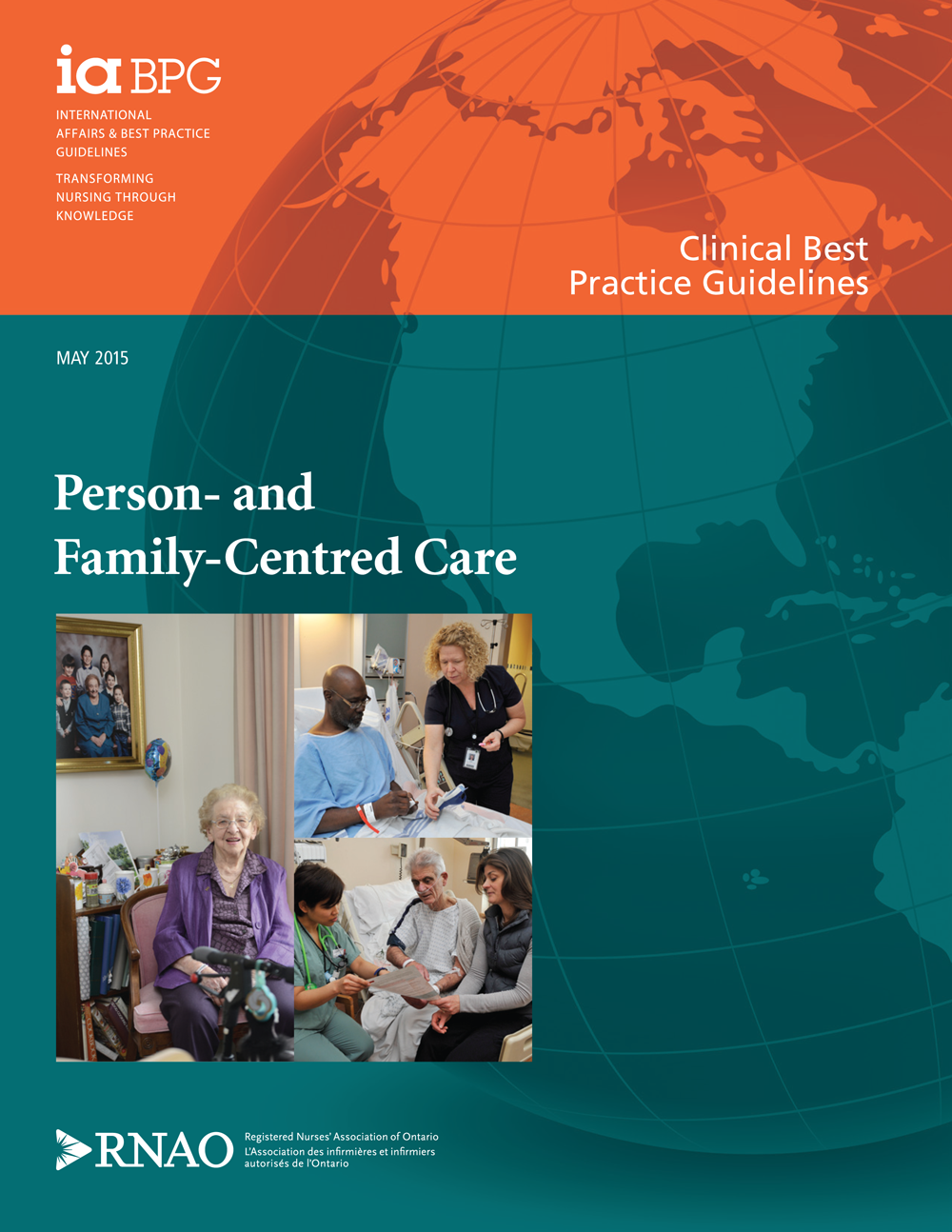
Using the SMA Framework, let’s look at how it can be applied to the implementation of a guideline to support the uptake and sustainability of knowledge and mobilize change. We've chosen the 2015 RNAO Person- and Family-Centred Care (PFCC) Best Practice Guideline (BPG) for this scenario.
|
Image
 |
Scenario A health setting wants to enhance the care they are providing to persons, as the recipients of care, and their families. The goal is to achieve excellence in care by implementing the Person- and Family-Centred (PFCC) Best Practice Guideline (BPG). A change team of person- and family-centred champions is formed to lead the change and engage staff. They decide to use the SMA Framework to support their change initiative.
|
In the table below, we list all of the SMA Framework elements and group them from (a) to (p) under the three SMA framework categories (Preconditions, Key Characteristics and Outcomes). The right-hand column illustrates how each element (identified in parentheses) can be applied to the implementation of the PFCC BPG to support change and achieve goals.
| SMA Framework timepoint | Elements* | Applying the elements of the SMA Framework to support guideline implementation |
|---|---|---|
| Preconditions (that is, the starting point of guideline implementation before the social movement begins) |
(a)Change is valued and necessary (b) People are receptive to change (c) Examples of social movements are recognized |
A health setting routinely implements knowledge, including best practice guidelines, as a means of providing evidence-informed practice and quality improvement. This includes all areas of clinical practice, including person- and family-centred care (PFCC) (a). Pressure at the health-care setting is building among some point-of-care staff after a review of patient satisfaction surveys that show a perceived lack of holistic care. In response to this, they begin to discuss the possibility of implementing of the PFCC BPG to address this issue. They believe strongly in the change or "shared concern"; they recognize it as credible, urgently needed and important. They have the energy to lead a change initiative (a, b). People are or become aware of social movement actions and how powerful they can be to achieve change when people come together and take action (c). |
| Key Characteristics (that is, the features that are present during the social movement) |
(d) Urgent need to take action (e) Framing (f) Intrinsic motivation (g) Emerging leaders (h) Individual and collective action (i) Public visibility (j) Collective identity (k) Momentum (l) Networks (m) Core leadership structures |
Mounting pressure to make practice changes fuels some point-of-care staff to begin implementing the PFCC BPG as change agents and champions (d). To help all staff understand the meaning and value of person-and family-centred care, the champions use strategic messaging to frame the issue. They include patient stories in their messaging to highlight the value of holistic care and shared decision making (e). As the change agents start working together, they begin to emerge as committed informal leaders (g). These leaders are intrinsically motivated to get involved because this topic aligns with their values and beliefs in PFCC principles (f). Some of the change agents decide to work together as a change team who are responsible for guiding and leading the change process and for engaging other staff (m). With staff input and support from their leadership team, the change team develops and coordinates actions for change including holding educational sessions on the guideline. Each session begins with sharing stories from persons, families, or point-of-care staff to reinforce the values underlying the need and change and to inspire and motivate (e, f, h). The change team regularly shares photos of staff at the educational sessions via group email to create awareness of the guideline implementation(l). This also builds credibility and energy for the change and inspires more staff to get involved (k). Over time, staff develops a shared group identity that reflects their priorities and values for PFCC (j). Change agents participate in monthly knowledge exchange meetings and webinars as part of a larger network of PFCC champions. Through these interactions, they gain ideas and access to resources that help further enhance their skills (l). |
| Outcomes (that is, the features that may occur following the social movement) |
(n) Outcomes are met (o) Change is scaled up, out, or deep (p) Capacity in leading change is increased |
The health setting has implemented the PFCC BPG and has successfully made practice changes based on guideline recommendations (n). When it becomes obvious that the practice changes are effective, the implementation of the PFCC BPG is scaled up and out to other units spreading the change to other patient populations and staff members (n, o). Over time, the values of person- and family-centred care (as informed by the implementation of the PFCC BPG) become deeply ingrained in the workplace culture (that is, the change is scaled deep) (o). Change agents learn how to lead change using social movement thinking and actions which strengthen their ties to one another and to their setting. This also readies them to lead another change initiative, such as implementing another guideline (p). |
* The elements of the SMA Framework are listed in the table using an alphabetized format. However, in reality, the elements may appear spontaneously at each of the timepoints - Preconditions, Key Characteristics and Outcomes - in response to a developing situation and without a specific sequence.
Don’t worry if your implementation plans do not include all of the elements of the SMA Framework – just use what works for now. To learn more about the framework and its elements, see Social Movement Action Framework
